This week offers a fine chance to catch sight of a unique asteroid.
324 Bamberga reaches opposition this week in the constellation Pisces on (friggatriskaidekaphobics take note) Friday the 13th at 7AM EDT/11:00 Universal Time.
About 230 kilometres in size, 324 Bamberga reaches 0.81 astronomical units from the Earth this week. No other asteroid so large gets so close.
Discovered on February 25th, 1892 by Johann Palisa, 324 Bamberga only reaches a favorable opposition once every 22 years.
Shining at magnitude +8.1, 324 Bamberga is also one of the highest numbered asteroids visible with binoculars. Earth-crossing asteroids 433 Eros, which made a close pass last year, and 4179 Toutatis are two of the very few asteroids that possess a larger number designations that can regularly reach +10th magnitude.
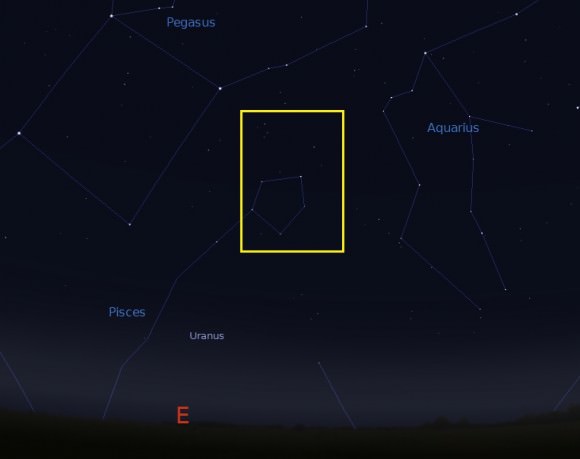
So, why did it take so long for 324 Bamberga to be uncovered? One factor is its high orbital eccentricity of 0.34. This means that most of the oppositions of the asteroid aren’t favorable. 324 Bamberga orbits the Sun once every 4.395 years and only comes around to an opposition that lands near perihelion once every 22 Earth years. Perihelion this year occurs only 45 days after opposition on October 27th.
The resonance between 324 Bamberga and Earth is nearly five Earth orbits for every one circuit of the Sun for the asteroid and is offset by only 9 days, meaning that the 22 year window to see the asteroid will actually become less favorable in centuries to come. 324 Bamberga made its last favorable appearance on September 15th, 1991 and won’t surpass +10th magnitude again until September 2035.
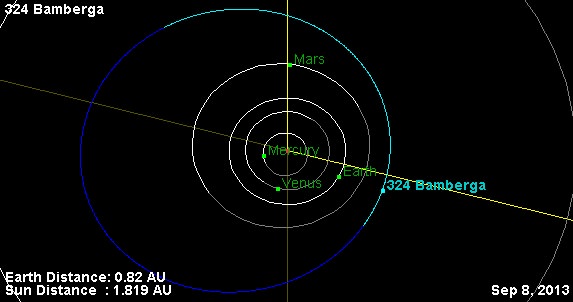
Observing asteroids requires patience and the ability to pick out a slowly moving object amidst the starry background. 324 Bamberga spends September west of the circlet of Pisces, drifting two degrees a week, or just over 17’ a day, to cross over into the constellation Pegasus in early October.
324 Bamberga will be moving too slow to pick up any motion in real time, but you can spy it by either sketching the field on successive nights or photographing the region and noting if the asteroid can be seen changing position against the background of fixed stars. Start hunting for 324 Bamberga tonight, as the Full Harvest Moon will be visiting Pisces later next week on the 19th.
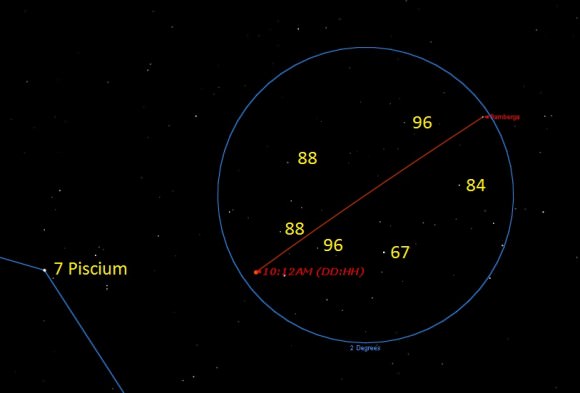
324 Bamberga is also unique as the brightest C-type asteroid that is ever visible from Earth. The runner up in this category is asteroid 10 Hygiea, which can shine a full magnitude fainter at opposition.
It’s also remarkable that Palisa actually managed to discover 324 Bamberga while it was at 12th magnitude! Palisa was one of the most prolific visual hunters of asteroids ever, discovering 121 asteroids from 1874 to 1923. He accomplished this feat first with the use of a 6” refractor while based at the Austrian Naval Observatory in Pola (now the Croatian town of Pula) and later using the Vienna observatory’s 27” inch refractor.
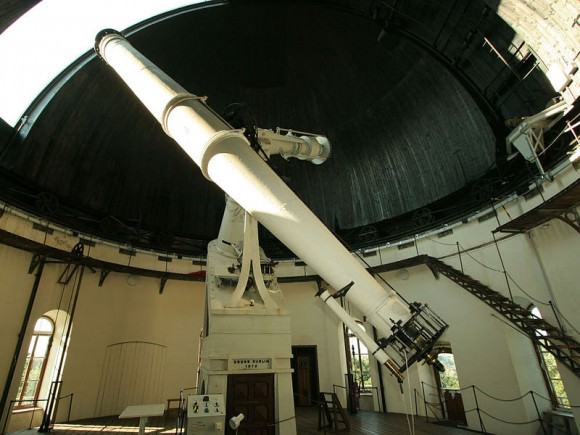
324 Bamberga itself takes its name from the town of Bamberg in Bavaria, the site of the 1896 meeting of the Astronomische Gesellschraft.
An occultation of a star by 324 Bamberga on December 8th, 1987 allowed astronomers to pin down its approximate size. Searches have also been carried out during occultations for any possible moons of this asteroid, though thus far, none have been discovered.
It’s interesting to note that 324 Bamberga will also actually occult the star 2UCAC 3361042 tonight in the early morning hours at 8:59-9:10 UT for observers spanning a path from Florida to Oregon. The magnitude drop will, however, be very slight, as the star is actually 3 full magnitudes fainter than the asteroid itself. Dave Gee caught a fine occultation of a 7.4 magnitude star in the constellation Corvus by 324 Bamberga in 2007.
There’s also something special about this time of year and the region that 324 Bamberga is crossing. More visual discoveries of asteroids have been historically made in the month of September than any other calendar month. In fact, 344 of the first 1,940 numbered asteroids were found in September, more than twice the average. Palisa’s own track record bears this out, though 324 Bamberga was discovered in February.
One of the primary reasons for a September surge in discoveries is viewing direction. Astronomers of yore typically hunted for asteroids approaching opposition in the anti-sunward direction, which in September lies in the relatively star poor fields of Pisces. In December and June —the months with the lowest numbers of visual discoveries at only 75 and 65 for the “first 1,940” respectively —the anti-sunward point lies in the star-rich regions of Sagittarius and Gemini. And by the way, the meteor that exploded over the city of Chelyabinsk on February 15th was sneaking up on the Earth from the sunward direction.
Be sure to catch a glimpse of this unique asteroid through either binoculars or a telescope over the coming weeks. The next chance to observe 324 Bamberga won’t roll around again until September 2035… it’ll be great to compare notes of the 2013 apparition on that far off date!

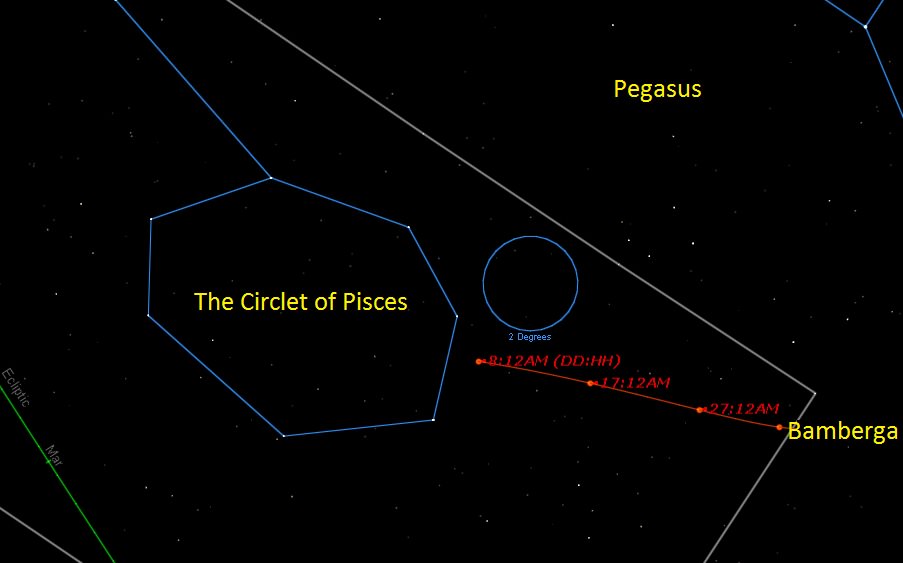
M-type, C-type, S-type or something else? I haven’t found anything about Bamberga.
324 Bamberga is a C-type asteroid: http://en.wikipedia.org/wiki/324_Bamberga
Seems to me this article conspicuously omits mentioning 4 Vesta, which occasionally reaches naked eye magnitudes.
Correct; Vesta, Ceres and Juno can all be binocular objects, but never get as close to the Earth as 324 Bamberga. Few high number asteroids are visible for backyard astronomers.
Ceres is a dwarf planet not an asteroid but very true.